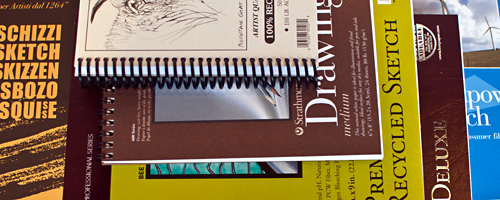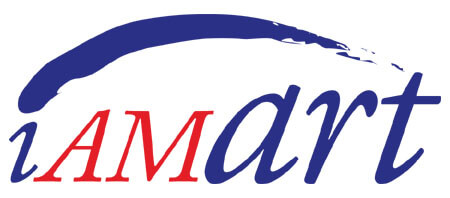choosing a sketchbook - part 2
paper type and quality

Along with paper weight and surface, there are a number of additional factors that differentiate sketchbook papers for different uses or preferences.
Some papers, advertised as “green” or environmentally friendly, are made of recycled materials or fibers that do not come from trees. These papers are sometimes not bleached and therefore have a brown or gray tint, or irregular flecks. Other eco-friendly papers are made in wind-powered or hydro-powered paper mills.
Many papers are acid free. This designation means that the paper has a neutral pH (around 7). Acid-free papers should be selected for work intended to last for long periods of time because papers with higher acid content will deteriorate much faster. For most cellulose-based papers, acid-free also means that lignin and sulfur have been removed from the paper. These are the ingredients in wood-based papers that fade ink and turn paper yellow over time.
Cotton and cotton-rag paper do not contain cellulose and are naturally acid-free. Cotton-based papers are also stronger, often thicker, hold up better to a lot of erasing, and perform well for wet media such as watercolor or ink washes. Cotton is often blended with cellulose to add strength and durability to paper. Premium archival papers will often list a ratio of cotton and wood fiber.
Papers intended for wet media (paints or inks) are made with sizing, a starch or gelatin that is either included in the paper pulp during the paper-making process, or is applied to the surface of the paper. Sizing prevents liquid from absorbing too quickly into the paper, allowing some working time to lift, lighten, or move paints or inks by applying more water. Sizing also helps protect the paper from getting too soggy, which can result in tearing and wrinkling. Sizing can also help prevent finer ink or paint lines from spreading and feathering. Sketchbooks intended for wet media should indicate on the cover that the paper is sized.
Some sketchbooks are made for specialized uses like field drawing or multiple media. These sketchbooks often contain a variety of paper types in one book, mixing lined pages for writing with blank pages for drawing. Other sketchbooks have gridded pages for drafting sketches and isometric drawings.
